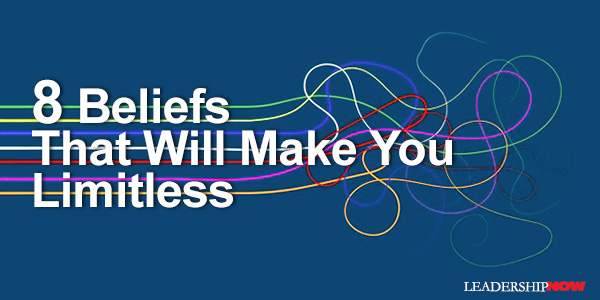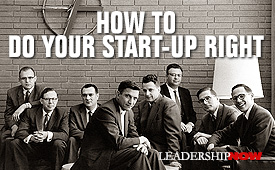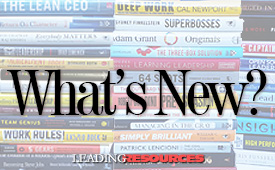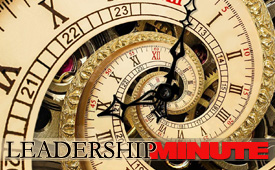 |
 |
07.11.25

8 Beliefs That Will Make You Limitless
UNDERSTANDING how people’s minds work gives us a foundation to make change happen. Sometimes we get stuck until we find the insight or the perspective that makes all the difference. In The Difference That Makes the Difference: NLP and the Science of Positive Change, Josh Davis and Greg Prosmushkin present eight shifts in thinking that can be the difference to move change forward. The authors offer these tools derived from Neurolinguistic Programming to help people apply them in a positive way to help lift people up. 1. How We Experience the World Is Not the Same as Reality We don’t see reality. We see our perception of reality. Our worldview—our expectations—distort reality. We see what we think is important. “What we experience is not reality, it is instead a version of reality that serves our needs and is heavily influenced by what is going on in our minds.” People don’t react to reality—they react to their experience of reality. Those two things are not the same. So, if you want to understand someone or help them change, rather than trying to understand reality, you should try to understand how they experience reality. Doing so reveals how people get stuck and opens wide the possibilities for change. Once you learn how someone experiences the world, it becomes clear what to try changing in order to help them. You are then in a position to find the difference that makes the difference for them. This means that most of our limitations are of our own making. Your options and possibilities grow when you expand and enrich your mental model or worldview. Begin by presuming that you don’t know everything about yours or others’ mental model, and change will become easier. 2. Why Not Me? When you believe you can’t, you behave in a way to bring about the thing you don’t want. Believing that you can is a strong predictor that you will. How differently would you behave if you thought that if they can do it, it is possible for you as well? Believing that if it’s possible for someone, it’s possible for you is not everything, but it can be life-changing. Life is magical, but not magic. But taking on this belief is often critical in leading to these outcomes. Believing you can doesn’t mean that you can do anything and everything. But you can learn what approach others that have gone before you have approached what you are trying to do and adjust your mental model accordingly. 3. All I Need Is Already Within Me Do I have what it takes to do what I want to do? Progress to what we want always begins with the first step, no matter where you are. Focus on the process, not the result. If we believe that we don’t have what it takes, we will not make the changes to move us in the direction we want to go in. All we need to begin is already within us. Research has now also shown that the effects of this belief are reliable-when people believe they have the resources to change, they are significantly more likely to do so. This is true whether it is a personal or professional change. And the opposite has been found, too—even when people do have the resources, if they believe they don’t, they don’t take action and don’t change their situation. When we focus on what we have rather than what we don’t have, we can make the first step. 4. There’s No Failure, Only Feedback Too often, we take failure as a sign that we are not up to the task. We begin to doubt ourselves. We need to reframe our experience. It’s not failure. It’s feedback. Another step to get you where you want to go. We learn more completely when we see failure as feedback. Whenever we put ourselves out there and try to do something new, we run the risk that we may not do it well. People who choose to use a feedback frame process information about how they performed differently from those who use a failure frame. Even before one second has gone by after getting information about performance, the differences can be seen in the brain. When using a feedback frame, our brains give more attention to the information coming in and use it to improve future performance. Whereas when people see the information as judgment about themselves or whether they failed, then the brain does not capture or use the information coming in as effectively. 5. How My Message Landed Matters More Than What I Meant When communication fails, it’s feedback that you need to course-correct and try again. Fortunately, there is a useful solution for communicating well even when your intended message may not be getting through as planned—presume that the meaning of your communication is the response you get. Take that responsibility and you will take the right steps to find out what you are communicating and ultimately get the right messages across. 6. If At First I Don’t Succeed, I Must Try Something Else This advice is based on the idea that “in any system, the element with the most flexibility exerts the most influence. Most of the time, the person who is able to adapt to the situation on the ground is the one who gets their needs met.” Or perhaps you can put it this way: Insanity is doing the same thing over and over and expecting different results. (No, Einstein didn’t say that.) To be flexible, you need to keep the end goal in mind and think through these steps: 1. Clarify your ultimate need—your why.
7. Assume Good Intentions Get curious, not judgmental. Thinking we know everything puts a lid on our learning and effectiveness. “Whenever you encounter resistance, get curious about the other person’s positive intention first.” People most often do not do bad things for the purpose of doing bad things; they have a positive intention they are trying to work through. This doesn’t justify bad behavior, but if you can find a way to get at the positive intention, you have a chance to change those bad behaviors. Ask yourself, “Why was that important to them to say or do?” as many times as it takes to get the answer. 8. If I Knew Then What I Knew Then Dwelling on past mistakes and criticizing yourself only drains your energy and distracts you from forward momentum. This is true for ourselves and others: “People behave in the best ways they know how and make the best choices they can, given their mental model of the world.” Behavior makes sense in the context of the mental model in use. If we have unconditional positive regard for ourselves and others, we can have compassion in any context. The authors go on to provide 10 tools for understanding someone’s mind and then how to use this information to lead change in our own lives and those of others. 
Posted by Michael McKinney at 06:54 AM
|
BUILD YOUR KNOWLEDGE
 

How to Do Your Start-Up Right STRAIGHT TALK FOR START-UPS 
Grow Your Leadership Skills NEW AND UPCOMING LEADERSHIP BOOKS 
Leadership Minute BITE-SIZE CONCEPTS YOU CAN CHEW ON 
Classic Leadership Books BOOKS TO READ BEFORE YOU LEAD |